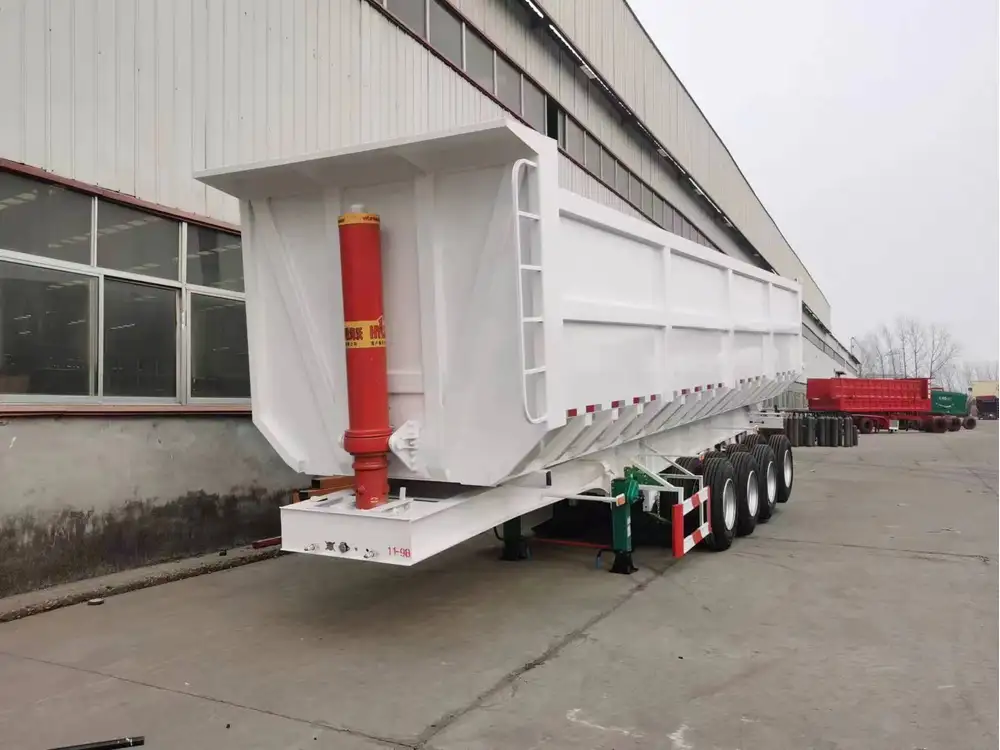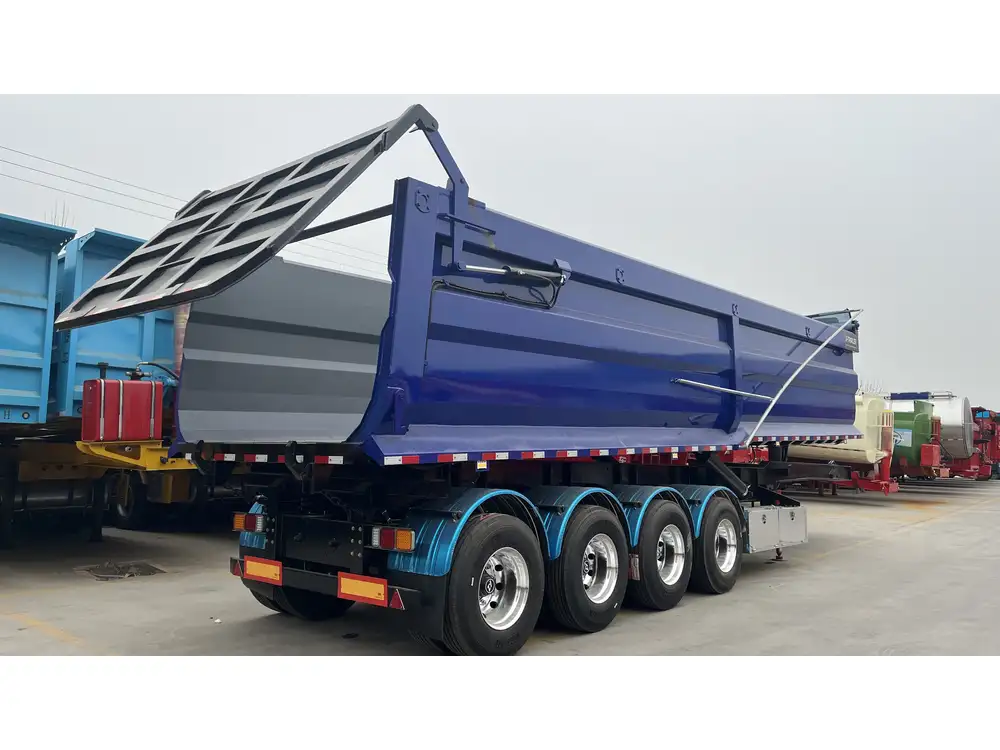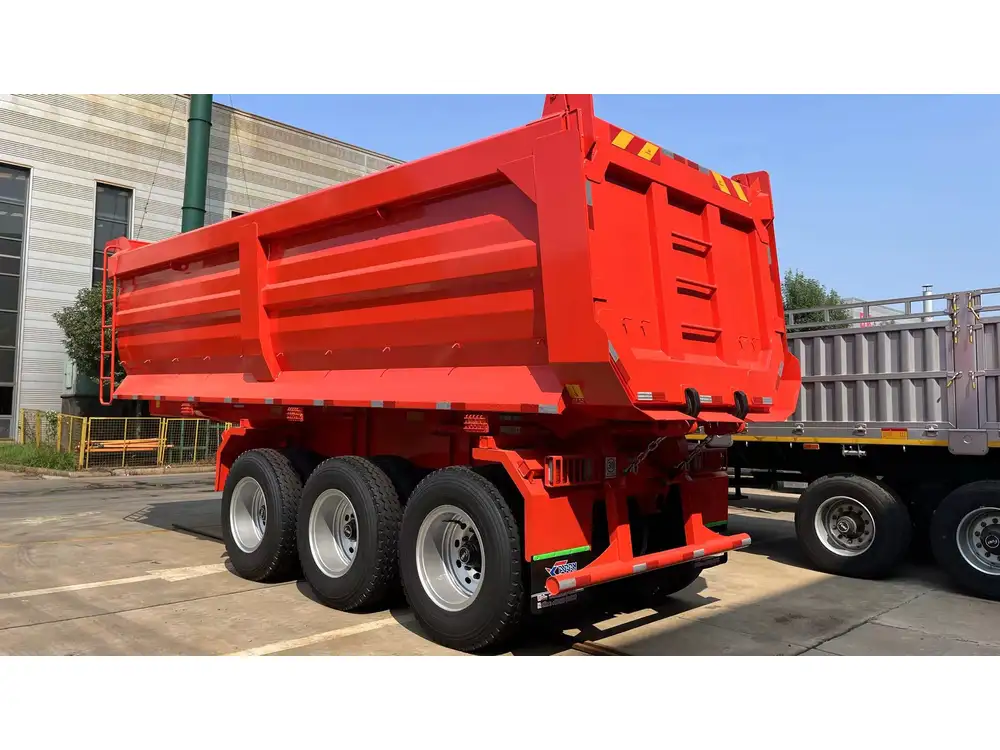When it comes to ensuring the optimal performance of your semi-trailers, understanding how to effectively supply air to trailer tanks is paramount. The proper air management in trailer tanks not only enhances the efficiency of the brake system but also plays a critical role in maintaining safety standards and prolonging the lifespan of your vehicle. This article delves into the intricate details of air supply mechanics, crucial components involved, common issues faced, and best practices to ensure your trailer’s air system operates flawlessly.
Understanding Air Supply in Trailer Tanks
To grasp the essence of supplying air to trailer tanks, let’s first break down how air systems function in these vehicles. Trailer tanks, mostly associated with pneumatic brakes, require a consistent and controlled air supply to operate efficiently. The system relies heavily on air pressure to engage the brakes and ensure safety during transportation. Any irregularities in this air supply can lead to faulty braking, posing serious risks on the road.
Key Components of the Air Supply System

1. Air Compressors
The backbone of the air supply system, air compressors are responsible for converting mechanical energy into pneumatic energy by compressing air. Typically mounted on the truck’s engine, these compressors draw in air from the atmosphere and compress it into the air tanks.
2. Air Tanks
These are storage vessels that hold compressed air. In trailer systems, there are usually multiple tanks—primary and secondary—each fulfilling a specific function within the overall braking system.
3. Regulators
Regulating the pressure is vital. Air regulators control the output pressure delivered to various components of the braking system, ensuring a steady supply under different operational conditions.

4. Valves
Valves serve as crucial checkpoints that manage the flow of air. This includes emergency valves that release air pressure during malfunctions and service valves that control air flow during normal operations.
5. Brake Chambers
These chambers convert the air pressure into mechanical force to engage or disengage the brakes. Their efficiency is largely reliant on a consistent supply of compressed air.
The Process of Supplying Air to Trailer Tanks
Understanding the flow and replenishment cycle of air in trailer tanks is key to troubleshooting and maintenance.

Air Intake and Compression
Air Intake: The system begins by drawing in ambient air through the air intake system, often equipped with filters to ensure no particulates enter the compressor.
Compression: The compressor then compresses this air, raising its pressure for efficient storage in the air tanks.
Storage in Air Tanks
Once compressed, the air moves into the primary and secondary tanks. Each tank maintains a specific pressure level, which can vary based on the trailer’s demands.
Pressure Regulation
Air regulators maintain the necessary pressure, while valves, including one-way and service valves, direct air to the brake chambers or release it in case of pressure surges.

Troubleshooting Common Air Supply Issues
Even the most robust air supply systems can encounter issues. Below, we dissect several common problems and their potential solutions.
1. Insufficient Air Pressure
- Symptoms: Sluggish brake response or warning lights on the dash.
- Diagnosis: Check for leaks at hose connections and inspect the compressor for functionality.
- Solution: Tightening connections or replacing damaged hoses often resolves the leak. If the compressor is ineffective, a replacement is necessary.
2. Air Leaks
- Symptoms: Continuous compressor operation, visible hissing sound.
- Diagnosis: Use a soap solution to spray suspected areas and check for bubbles indicating leaks.
- Solution: Seal or replace leaking components—hoses, valves, or the compressor itself.

3. Frozen Air Lines
- Symptoms: Sudden loss of air pressure, brake engagement issues.
- Diagnosis: Cold weather, moisture buildup in the air system can lead to freezing.
- Solution: Install heated air hoses or dryers to eliminate moisture.
Best Practices for Maintaining Air Supply Systems
Proper maintenance is the linchpin that keeps your air supply functioning optimally. Here are structured guidelines to ensure your system remains in peak condition:
| Maintenance Task | Frequency | Description |
|---|---|---|
| Visual Inspections | Weekly | Check for leaks, wear, and loose connections in hoses and valves. |
| Air Dryer Maintenance | Bi-Annually | Change filters and inspect for clogs in the air dryer unit. |
| Tank Drainage | Daily | Drain condensation from air tanks regularly to prevent moisture buildup. |
| Pressure Testing | Annually | Conduct a complete pressure test to ensure integrity and performance of the system. |
| Compressor Checks | Quarterly | Inspect compressor belts and bearings for wear, ensuring optimal operation. |
Importance of Regular Maintenance
Regular maintenance not only extends the lifespan of your trailer tanks and related components but also ensures safety and efficiency. Neglecting these practices could result in costly repairs and dangerously malfunctioning brake systems.

Advanced Techniques for Enhanced Air Supply Management
For manufacturers and fleet operators looking to step up their game, investing in advanced air management technologies can yield substantial benefits.
1. Smart Air Management Systems
Utilizing smart sensors and electronic control units (ECUs) allows for real-time monitoring of air pressure. Alerts can signal when maintenance is due or if there are leaks, enabling preemptive measures.
2. Automated Maintenance Scheduling
Employing software solutions that automate monitoring and maintenance schedules ensures that critical tasks are not overlooked, adhering to manufacturer recommendations and safety standards.

The Future of Air Supply Systems in Trailers
The ongoing evolution of technology in the transportation industry hints at advancements in air supply systems that will streamline operations and enhance safety measures.
Emerging Trends:
- Integration of IoT: The Internet of Things will pave the way for interconnected systems, allowing for predictive maintenance based on collected data analytics.
- Alternative Energy Sources: Research into alternative compressed air solutions aims to reduce emissions and improve efficiency.
Conclusion
Understanding how to supply air to trailer tanks is more than a mere technical requirement; it’s an essential practice for safety and efficiency in the transportation industry. By familiarizing ourselves with air system components, staying vigilant on maintenance tasks, and embracing innovative technologies, we can ensure that our semi-trailers perform at their best.
Through diligent management and an informed approach, the air supply systems of trailer tanks can provide a robust and efficient means of operation, significantly enhancing overall safety on the roads.
In navigating the complexities of air supply in trailer tanks, it is vital to remain proactive, informed, and prepared—ensuring that every journey is as safe as it is efficient.



